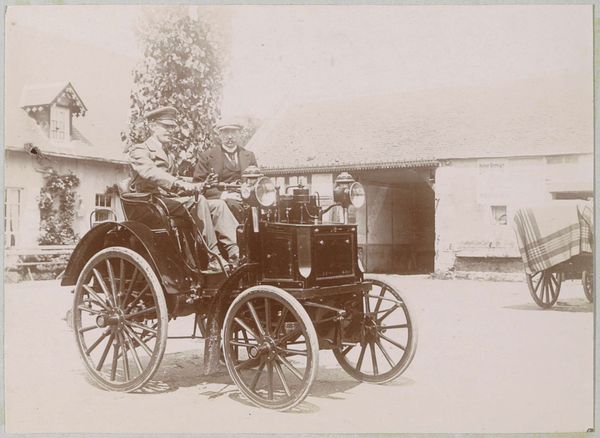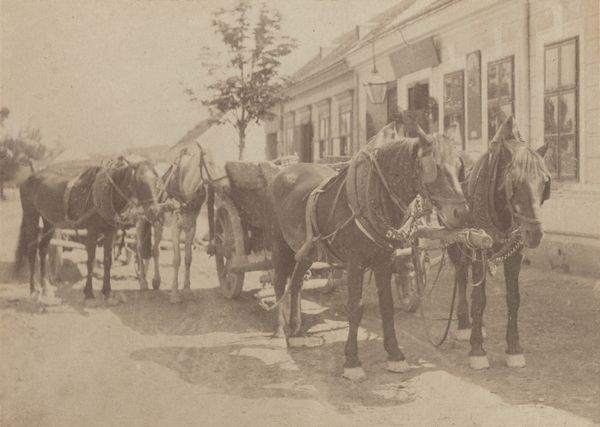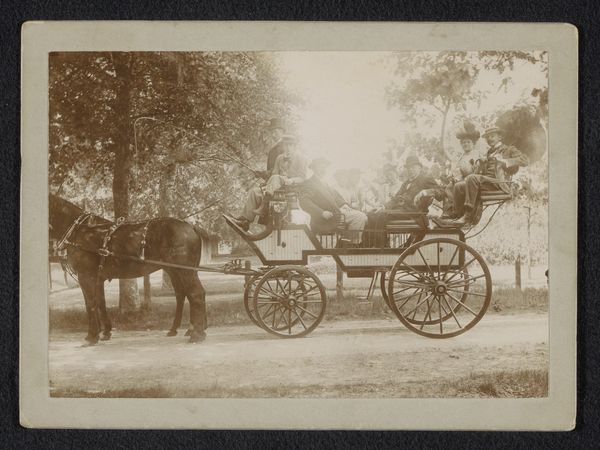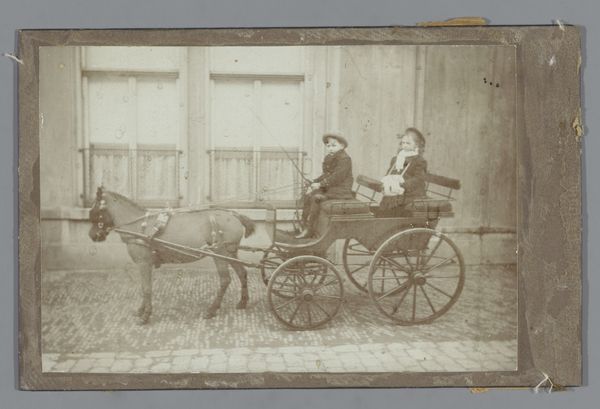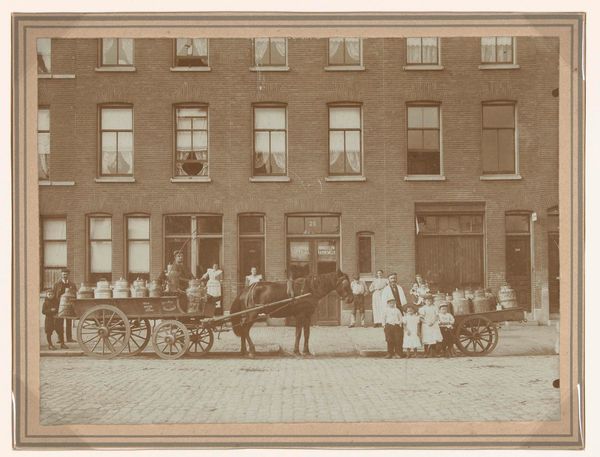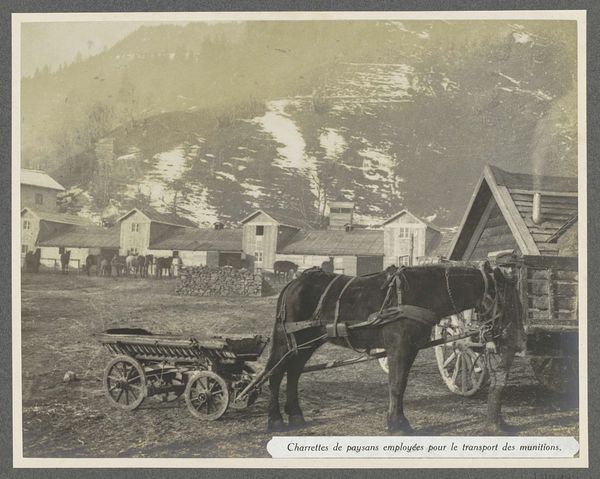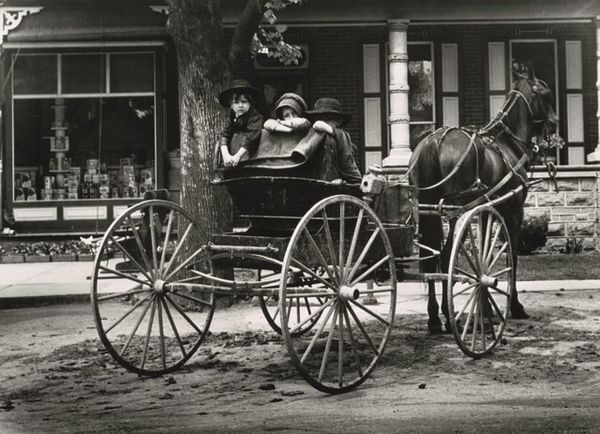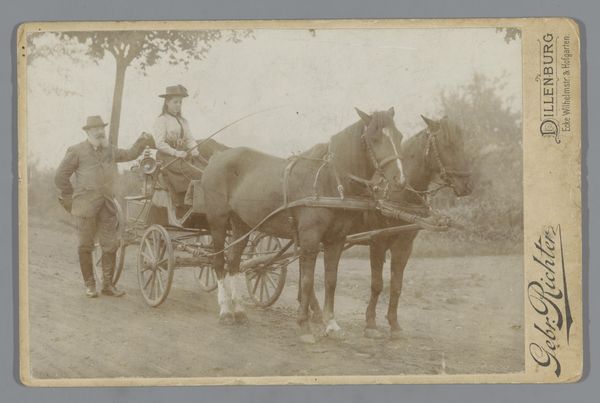
photography
#
16_19th-century
#
photo restoration
#
old engraving style
#
landscape
#
photography
#
framed image
#
19th century
#
men
#
united-states
#
genre-painting
#
realism
Dimensions: 5.7 × 9.2 cm (image); 6.1 × 10 cm (card)
Copyright: Public Domain
Curator: Welcome! Let’s consider this untitled photographic print, thought to be created sometime in the 19th century, and part of the Art Institute of Chicago's collection. Editor: It projects such a striking mood of quiet industry! The tonality is beautiful, full of subtly modulated greys. I see how the composition, dominated by rectilinear shapes—the store, the wagon—suggests an era defined by emerging structure. Curator: I'm intrigued by that. Note how "S.K. Fisk" is emblazoned above the shop entrance, establishing not just a place, but also an identity. Editor: Absolutely. “Fisk”, as in fish? Well, the symbol of the fish is quite rich—connected to early Christianity and symbolic abundance! Were they selling fish, perhaps? Or did Mr. Fisk align his enterprise with this culturally-loaded image? Curator: Perhaps a play on words. We do have a horse, motionless, tethered in service. A man, perhaps the delivery driver, sits perched atop the delivery wagon reading. It presents a tableau of the everyday—work, delivery, perhaps a stolen moment of literacy. Editor: The composition’s rigor gives it a particular potency, then. It isn't a random snapshot, but an organized visual declaration. The repeated verticals of the clapboard siding of the buildings and windows contrast with the curvilinear form of the horse and wheels of the delivery wagon, forming an intentional construction of social meaning. Curator: Quite possibly. The details are rich—the meticulously stacked packages on the wagon, the design of the wagon itself, the horse’s tack—they all contribute to this meticulous, almost obsessive rendering of reality. Editor: True, this close attention also transforms mundane objects into bearers of meaning. That wagon suddenly is not only transport; it’s a signifier of burgeoning commerce, of goods traveling to extend economic reach. The picture's impact exists because it organizes the familiar and transforms it. Curator: A stimulating interpretation! It prompts us to reconsider how much information can be embedded in an image, even a seemingly straightforward one. Editor: Indeed! It makes me consider the layered narratives a seemingly simple photograph like this contains—histories of labor, the emergence of industry and graphic design as commerce met vernacular symbol!
Comments
No comments
Be the first to comment and join the conversation on the ultimate creative platform.

